Our time in New Zealand was coming to an end and, sadly, February will be be our last month in this beautiful country.
We arrived in Napier at the end of January and were lucky that for our final month, we were to be house-sitting for one single property. Plus, as a bonus, our responsibility for this month was just the house. There were no pets to care for.
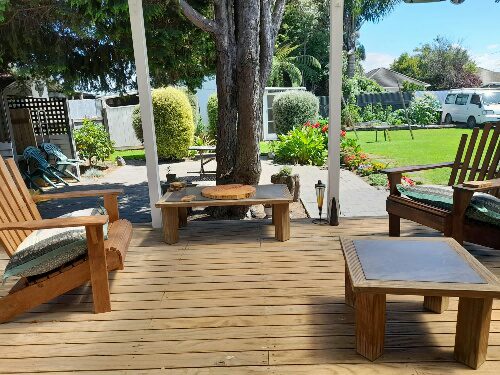
The house was very easy to care for, the sun was shining and the owners had kindly left us their car to use during our stay so we were looking forward to a month of sightseeing and relaxation.

It did start out that way. We really took advantage of all the spare time we had and were out sightseeing on most days.
Some days we went to visit areas locally that we could walk to. On other days we were driving hundreds of kilometres to see what we wanted to see.
Bluff Hill
Bluff Hill is high on the must-do itinerary of everyone that visits Napier. The hill is on the very edge of the city and stands 105 meters high.
You can drive up the hill but there are also numerous paths leading to the top. Some steep and straight up. Others take a more circular route, longer to walk but a less strenuous option.
We decided to avoid the designated paths and instead follow the streets. This way we climbed the hill slowly whilst being able to admire some of the many fantastic colonial – style houses that are built on the hillside.
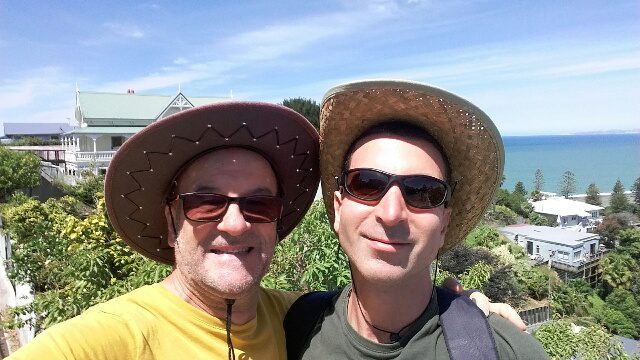
It is a steep but leisurely walk that will take you to the top in a little over thirty minutes. The view from the top is fantastic. Far-reaching over the city and port below.

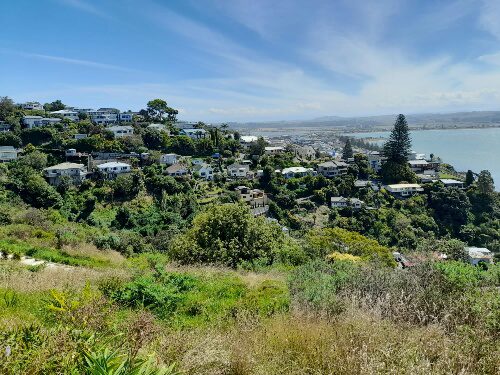
As we reached the top of Bluff Hill we came across some true Kiwi kindness.
The owners of the top house could easily have fenced off their exclusive view. Instead, they have created an open arch to their garden and placed two chairs on their lawn.
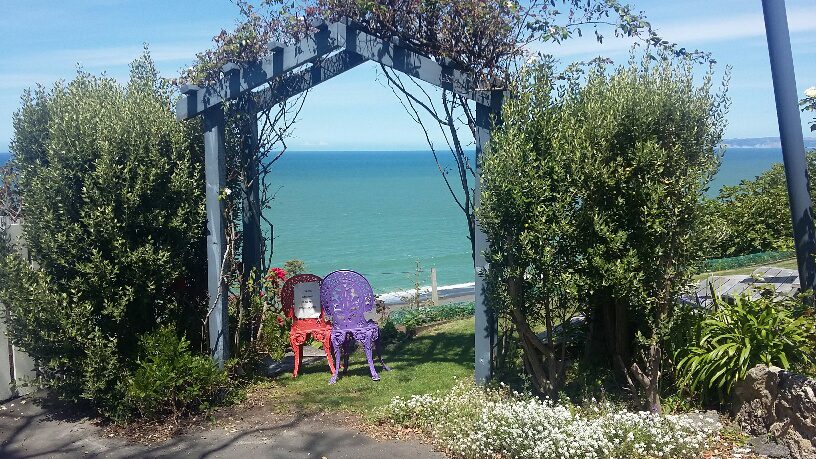
Attached to the chairs is a note inviting strangers to sit and enjoy the view.
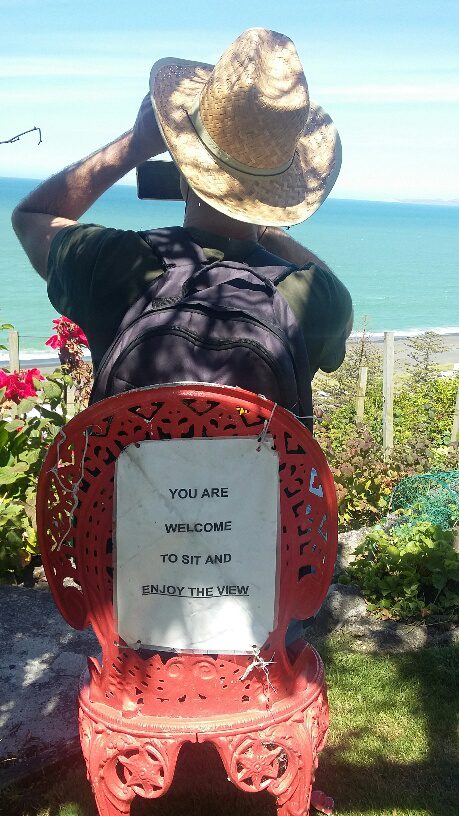
Te Mata Peak
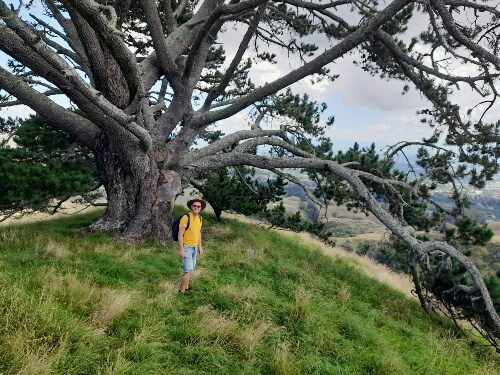
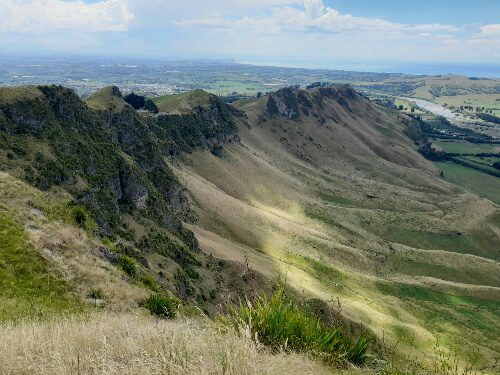
The highest hill in Hawke’s bay region, at 400 meters above sea level, is Te Mata Peak.
Legend says that a giant Maori chief, Te Mata, fell in love with the daughter of his rival, the Heretaunga chief. Te Mata was given a number of challenges that the Heretaunga chief thought would be impossible to achieve. If he were to pass these challenges then he would give Te Mata his acceptance of the love of his daughter.
Te Mata was doing well until the final challenge – To eat his way through a mountain range. This challenge proved to be just too difficult. Te Mata choked on the rock and died.
From that day the mountain range became known as Te Mata Peak and if you look at it from the north it is said that the rock formation shows the outline of Te Mata lying dead, face down.
To this day Te Mata Peak is still commonly referred to as ‘The sleeping giant’ by locals
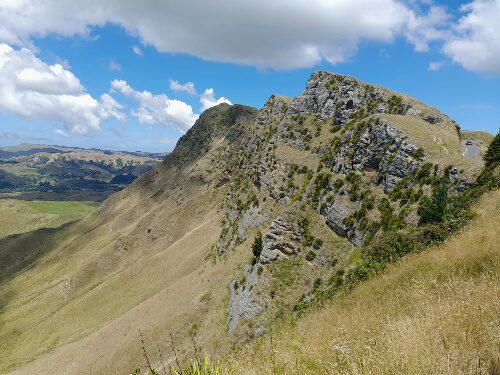
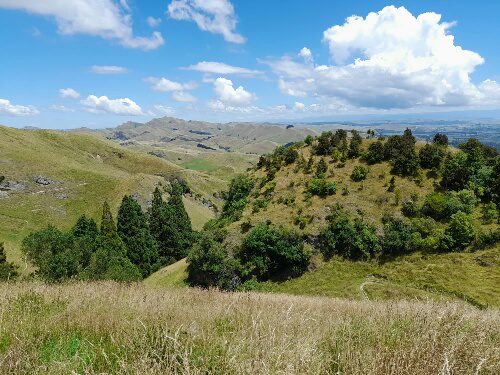
There is a road to the top so it is an attraction that is accessible to all but we decided to make a day of it and hike. On foot really is the best way to fully experience and enjoy the fantastic scenery that New Zealand has to offer.
There are many well-signposted tracks to choose from for all fitness levels making a visit here a not to be missed opportunity for anyone visiting the north island.
Te Mata peak is ideal terrain for just about every type of outdoor activity you can imagine. From hikers enjoying the countless pathways to mountain bikers, rock climbers, abseilers and even hang gliders and paragliders that take off from the summit.
Taupo
We had been told that we should visit the town of Taupo whilst we were on the North Island so, one day we woke extra early and drove for three hours to get there.
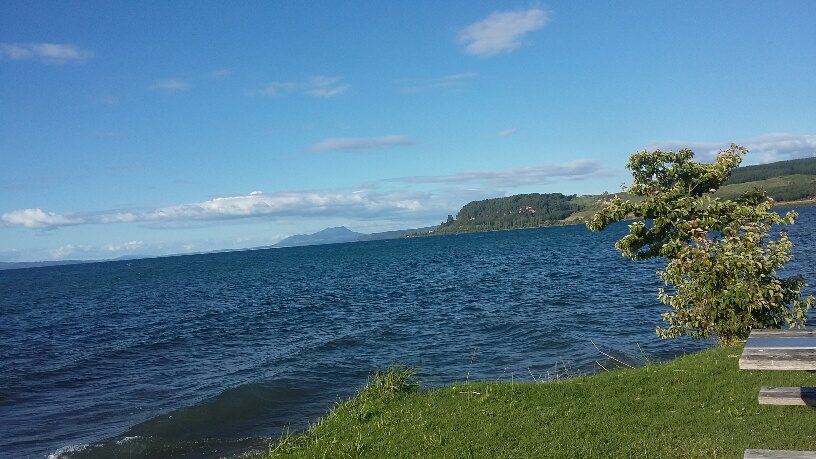
The town is situated in the centre of the North Island and is famous for its huge lake, Lake Taupo. The lake was created nearly two thousand years ago by a volcanic eruption and now sits in the caldera of the Taupo Volcano.

With a surface area of 616 km2, lake Taupo is the largest lake in New Zealand. It is breathtakingly beautiful to look at and brings visitors worldwide to swim, fish or indulge in just about every water sport you can imagine.
The Huka Falls
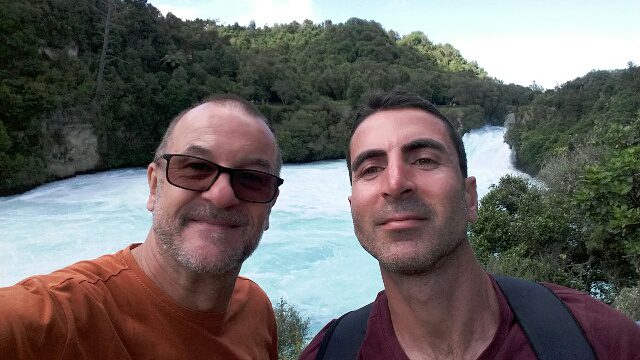
Just north of Taupo is The Huka Falls.
Here, waters from The Waikato River flow from Lake Taupo through river banks that are just 100 metres apart. The water is forced through a deep, narrow gorge of volcanic rock which causes it to quickly pick up speed.
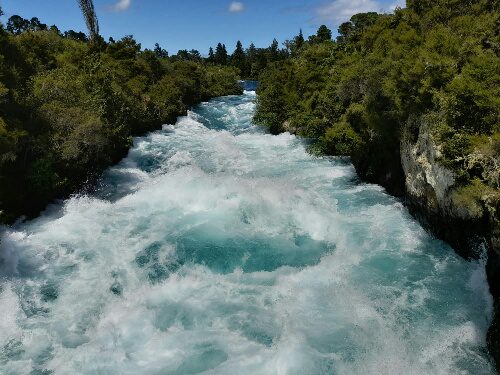
Eventually, the waters fall over a ledge of volcanic rock into a huge pool below creating The Huka falls.

Just above the Huka Falls are two great vantage points that let you get so close that you can feel the water spray in the air.
It really is an amazing display of the power of nature.
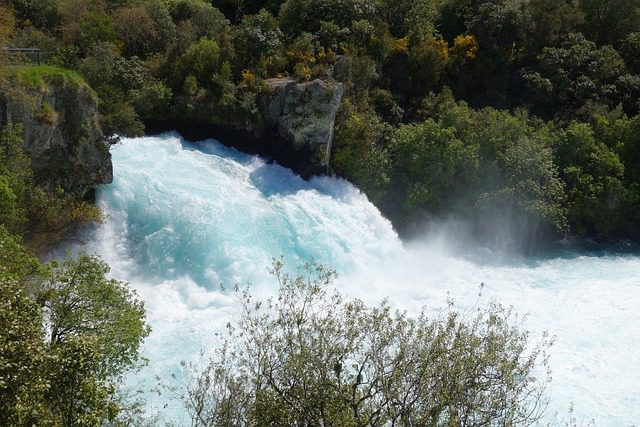
Tongariro National Park
Our visit to the Tongariro National Park was one of the highlights of our visit to New Zealand.
This is just one of New Zealand’s many areas of natural beauty but deserves a mention as in 1887 it was declared to be the country’s very first official National Park.
The park covers a vast area and is home to three active volcanos. Tongariro, Ruapehu, and Ngauruho.
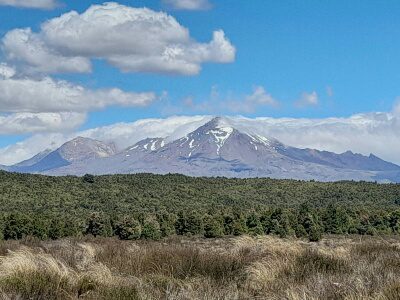
Ngauruhoe last erupted in 1977, Ruapehu in 2007, and Tongariro in 2012.

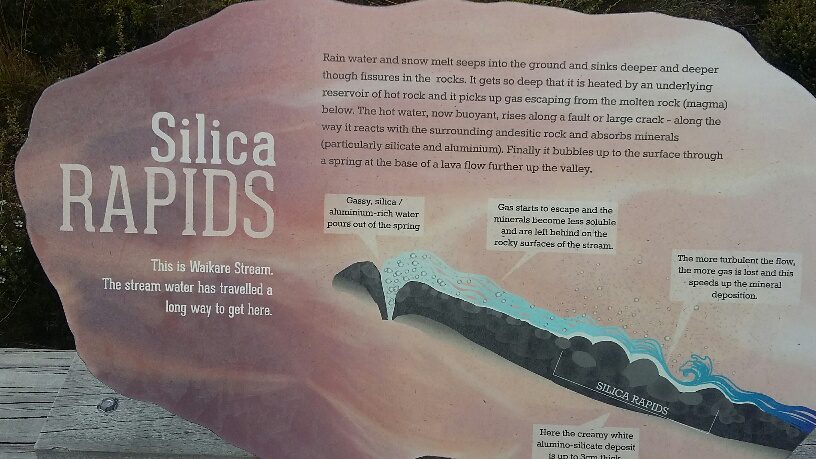
With numerous hiking trails to choose from for all abilities, Tongariro National Park is a magnet for lovers of the outdoors. On the day we visited, we decided to walk a nature trail that led us to the Silica Rapids.
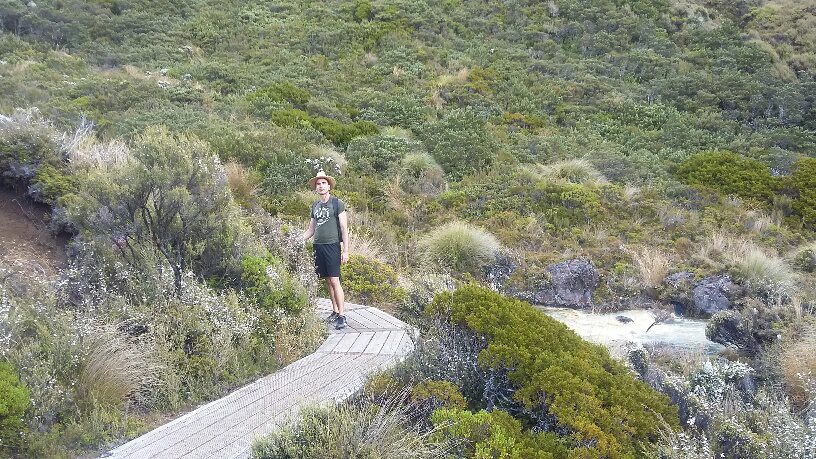

This a relatively easy hike of around 7km. it took us along a well-signposted track over bridges, along boardwalks, across wetlands, and through forests.
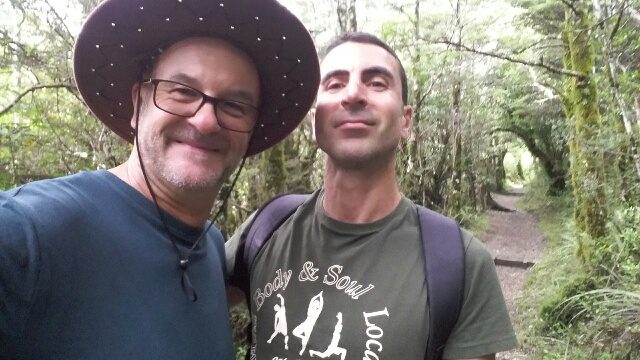

All along the trail were notice boards giving information about the wildlife and nature around you. An interesting contrast in colours along the trail is created by different minerals in the water. This was an excellent day out!
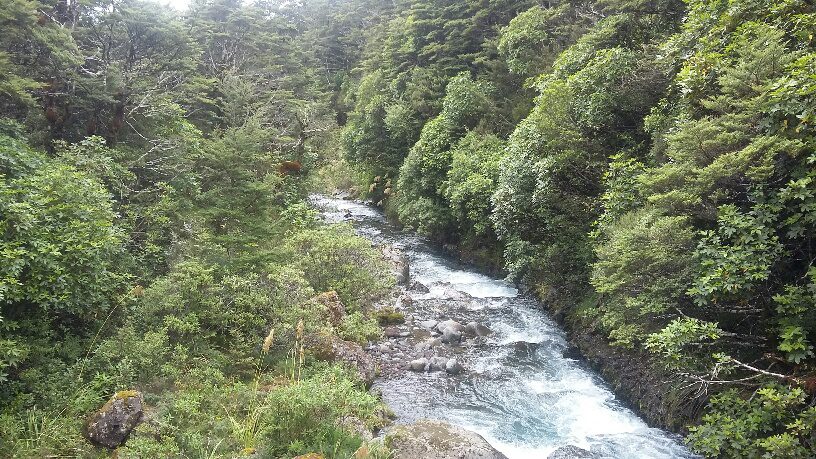
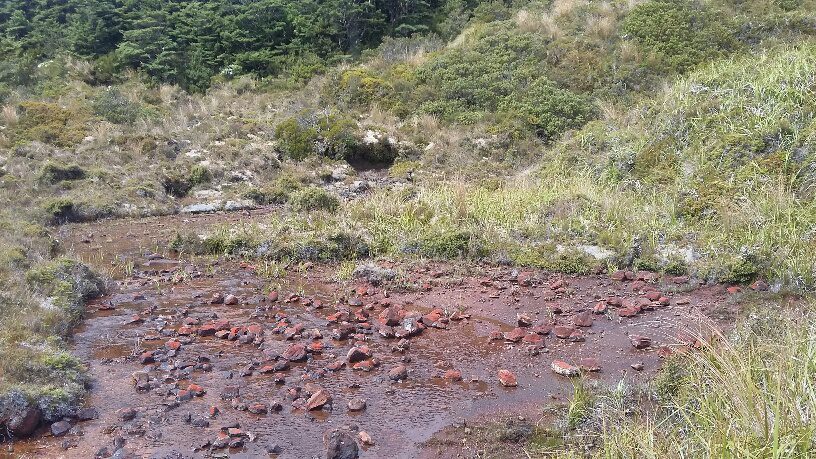
Tangoio Beach
I can’t do a list of our days out without mentioning the beach!
In all honesty, I have been disappointed by many of the beaches in New Zealand. Many have been spoilt by ‘slash’ – the remnants of the surrounding timber industry that gets washed ashore.

Other beaches have been too deep, too cold and/or just too darn dangerous to go into because of strong currents.

However, That is not to say that we haven’t enjoyed some of the lovely beaches that New Zealand has to offer. One of our favourites is Tangoio beach.

Luckily for us, Tangoio beach was only a short drive from our February house sit so soon became our regular go-to beach during this stay. With Sunshine, sand, shallow waters and a beautifully scenic backdrop it became difficult to resist the temptation to jump in the car on many late afternoons to take advantage of the late, milder sunrays.

Cyclone Gabrielle!
We were having a great time during February. All was going well until the final week of our stay in Napier, which was also the final week of our stay in New Zealand,
Out of the blue, it started to make the news that a cyclone was heading our way – a rare occurrence for New Zealand
To say that the news came by surprise is an understatement. For three weeks we had been really making the most of our final days in this beautiful country then suddenly we were being told to prepare for what was to become New Zealand’s biggest natural disaster this century!
The drama started to unfold on Sunday. Our home hosts were due to fly home on Wednesday and we were due to fly out to Australia the following day, Thursday
SUNDAY
The news was that there was hope that the cyclone would not be a direct land hit. However, as it was such a large weather system we were still to expect very bad weather.
We decided our best course of action was to move and secure anything outside that we thought was likely to get blown over or away and hope for the best!
MONDAY
As the early evening arrived so did the bad weather! First the heavy rain and then the wind.
Karyo is a keen weather watcher. He explained that it was true that the cyclone was not going to be a direct land hit but, because it was such a large weather system and so slow-moving it would still bring really bad weather and would likely hang around for quite a while.
As the hours went by the rain continued to pour down and the wind got stronger and stronger.
The North and East of the North Island, including Napier, where we were staying were getting hit the worst. The whole area was now on a red alert warning – the highest alert possible. It was at this point that we started to get slightly nervous!
9 pm. We sat on the balcony witnessing the worst storm we have ever seen. The rain was now hammering down and big mature trees were visibly swaying from side to side.
10 pm. The wind was unbelievably strong and, having already been blowing for hours was showing no sign of let-up.
Midnight. We decided we had had enough excitement for one day. All we could do was wait for it to ease. We went to bed.
TUESDAY
4 am. I woke and the wind was still howling. A branch of a tree overhanging our house had come loose and was banging against the roof.
It was too dark to see anything out of the window. I lay there for a while, listening.
The wind did not seem to be quite as strong and the rain was not quite as heavy. The storm had now been blowing continuously for over seven hours.
I fell asleep.
7 am. I woke again and all was eerily quiet.
I went to the garden to assess the damage. To my surprise and relief, it was not half as bad as I was expecting. Lots of small items had moved around the garden. Leaves and tree branches were strewn everywhere but thankfully nothing of significance to report.
Relieved, I went back inside the house to check for any news on my phone only to find that I had no Wifi connection. On checking it became obvious that the house was now without electricity.
I had not bought any mobile data in New Zealand to put on my phone and was relying on home Wifi. With no electricity that meant the router was off and so I now had no way to check for any news.
When we arrived in New Zealand Karyo bought himself a three-month data package to last the period of our visit. Unfortunately, as we were due to leave New Zealand this coming Thursday, today (Tuesday) his data allowance was due to end. He turned his phone on, and picked up the news – The whole city was without power. They were working hard to repair it and gave an estimate of ‘approximately two hours’ for re-connection.
Then his data went and with it all our communication with the outside world!
Our garden was totally private and fenced all around. We swept and tidied the garden then sat and waited for the re-connection. After three hours of waiting we decided to go to the shops to kill some time.
It was only as we made the short fifteen-minute journey to the shops that we started to realise the devastation the cyclone had caused and how lucky we had been to have been spared any more serious damage.
All traffic lights in the city were out of action. There were fallen trees and flooded streets everywhere. It was unbelievable that we had sat all morning completely oblivious to the extent of damage that had happened just beyond our fenced garden.
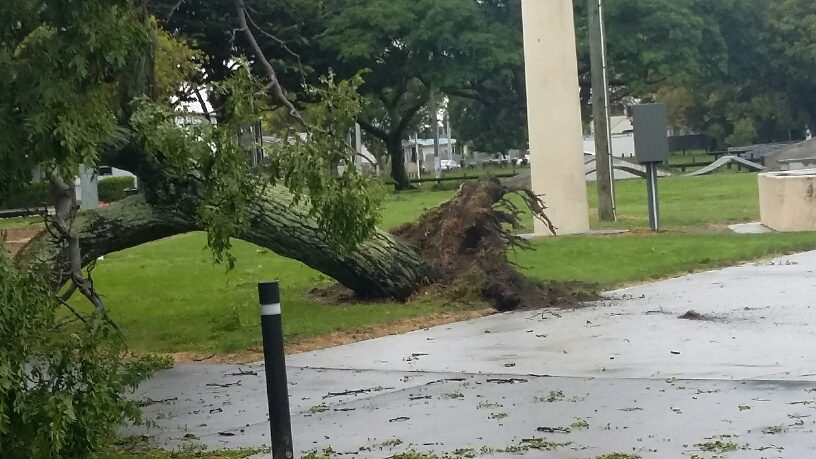
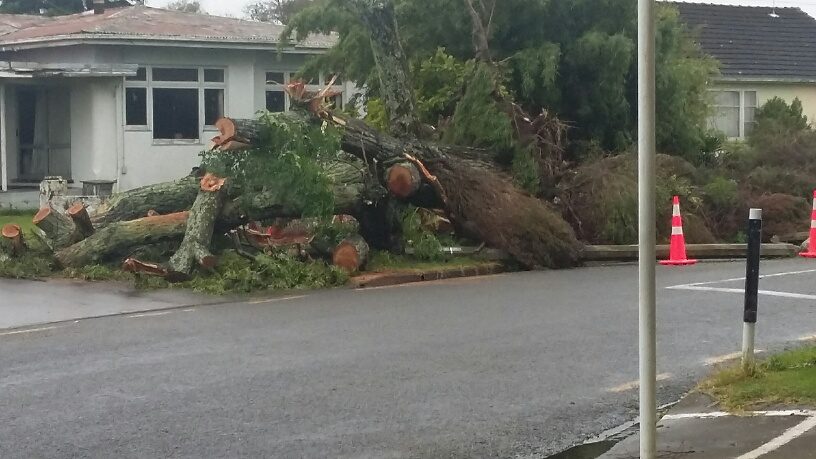
We had been using a supermarket called ‘Pack and Save’ – it is one of three large supermarkets all located next to each other. When we arrived we were surprised to see that of the three, only one, Pack and Save, was open.
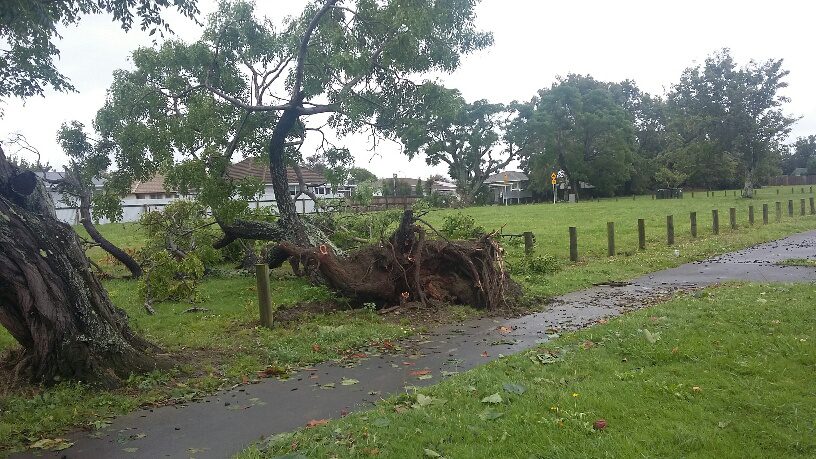

The car parks of the other two supermarkets were full of caravans and camper vans. We were later to learn that these were people that had been evacuated from their homes – it was as if a new neighbourhood of mobile homes, had appeared overnight, literally hundreds of them.
The queue to get into Pack and Save was huge. We could not understand why people were panic buying after the event. With nothing else to do, we joined the end of the queue.
The only topic of conversation in the queue was that of the events of the night before. Some people in the queue had battery-powered radios and were sharing the latest news. The estimation for electricity reconnection to the city had increased from two hours to five days!
Only now did the queue make sense. Pack and Save had generators and was the only supermarket in the city open.
We wandered around and bought as much food that did not need cooking as we could think of to last the next few days.
What was great to see was how supportive and kind everyone was being to each other. There was no pushing and shoving whatsoever. Everyone remained calm, patient and in good spirits.
We have since learned that they are comparing the devastation of Cyclone Gabrielle to that of the earthquake that hit this area in 1931.
Aswell as food, the word soon got out that Pack and Save also had the only Wifi connection in the area so there were lots of people surrounding the store using it.
Using the supermarket’s Wifi we managed to get in contact with Karyo’s mum to let her know that we were safe. He normally calls her every day and she frets if he is an hour late!
WEDNESDAY
When our home hosts had left for their holiday we had agreed to collect them from the airport this morning. We were still with no power or Wifi connection so had no way of knowing whether the airport was operational or not.
They had a Hong Kong – Auckland – Napier schedule. We decided to go to the airport as planned and hope for the best. When we arrived at the airport it was in chaos. Most flights today had been cancelled and all the people that should have flown out, or were waiting for people to fly in, were hanging around waiting for more information.
Luckily, the airport had Wifi. It was a weak connection but I managed to contact our home hosts. Their Hong Kong – Auckland flight had gone as planned but their Auckland – Napier flight had been cancelled so they were now stranded in Auckland.
We spoke to airport staff who told us our home hosts would probably be trying to get a standby seat on one of the few flights still operating but that their chances were slim.
However, he thought our chances of leaving the next day (Thursday) were more hopeful as the system was gradually starting to right itself. They told us to cross our fingers and turn up tomorrow as planned.
We went back to our house sit thinking that if the home hosts did arrive home, they would get a taxi – the journey was only about 20 minutes. If they didn’t make it today at least we could still leave tomorrow as, luckily, we did not have the usual complication of having pets to worry about.
Later that evening the home hosts unexpectantly turned up! They had been lucky enough to get one of the few remaining seats on a later flight destined for Napier.
On arrival in Napier, With no Wifi, they could not contact anyone to collect them. No taxis were available so, with no other option, they decided to hire a car at the airport to get home.
In the evening, the home hosts found a small single-burner gas camping ring they had and Karyo rustled up a one-pot hot meal for us all.
As we all sat on the veranda, discussing the past few days suddenly everything started to move – there was an earth tremor! We could not believe it.
In ordinary circumstances that would have been the big talking point of our New Zealand trip but after the events of the past few days, it now seems hardly worth a mention!
THURSDAY
With the whole city of Napier on its third day without power, our home hosts gave us a lift to the airport. To our delight, the airport seemed far less chaotic than the previous day. Many flights, including ours, were on schedule.
Against all the odds, with a great deal of sadness, we said our final farewells and waved a final goodbye to New Zealand.
We have had a ball and would love to return again sometime in the future
The last four days were definitely not how we had been expecting our time in New Zealand to end but this is a housesitting adventure we are never likely to forget!
![]()

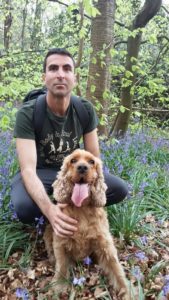
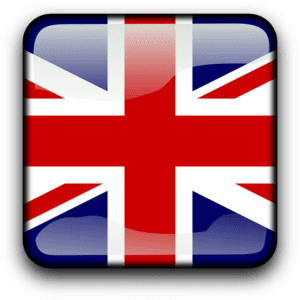

I just love hearing your adventures – what an amazing time you are having! Keep travelling and keep posting!!! Have a fabulous time in Australia 🙂
Cheers Nige, We are really enjoying this lifestyle and hope to keep it up until my knees or marbles go!
This was an exciting chapter in the Colin and Karyo saga! Very enjoyable. Enjoy Australlia, and stay safe.
Lol – It was!